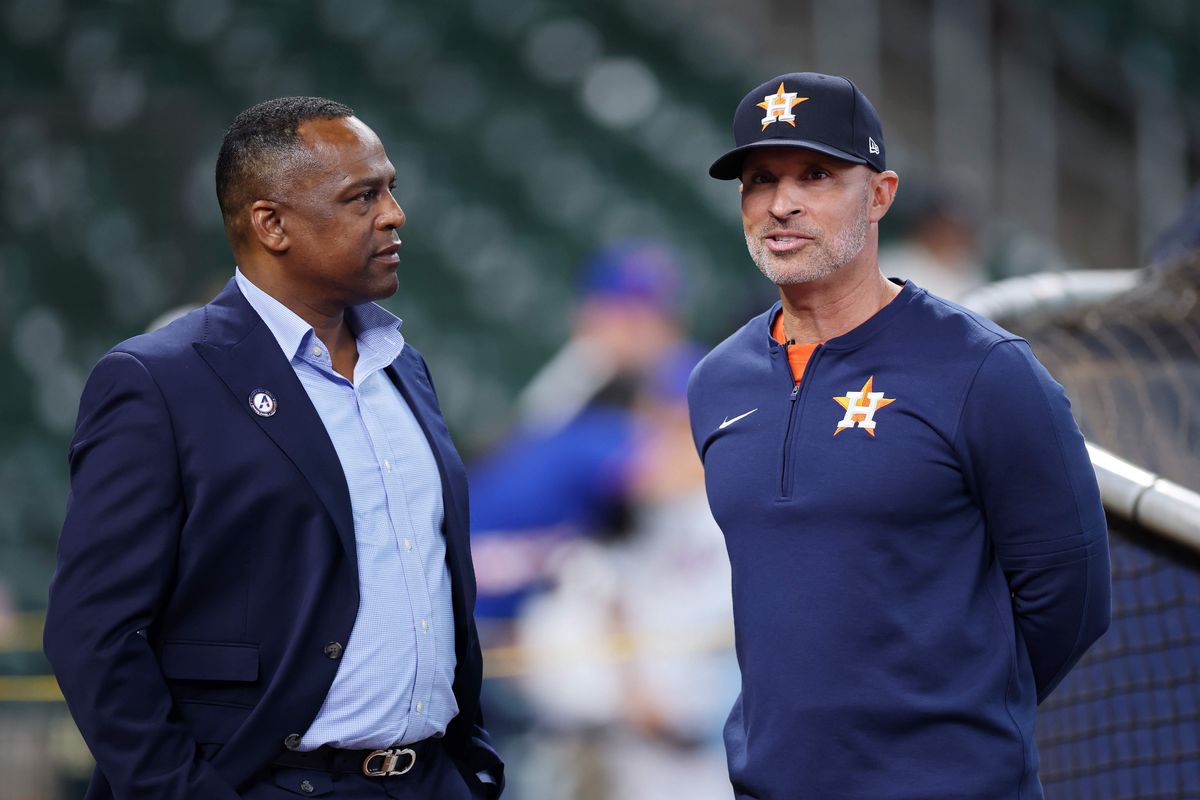
The Astros addressed a lot of needs in this year's draft. Photo by Tim Warner/Getty Images.
The Houston Astros entered the 2025 MLB Draft with limited capital but a clear objective: find talent that can help sustain their winning ways without needing a full organizational reboot. With just under $7.2 million in bonus pool money and two forfeited picks, lost when they signed slugger Christian Walker, the Astros needed to be smart, aggressive, and a little bold. They were all three.
A swing on star power
With the 21st overall pick, Houston selected Xavier Neyens, a powerful left-handed high school bat from Mt. Vernon, Washington. At 6-foot-4, Neyens is raw but loaded with tools, a slugger with plus power and the kind of bat speed that turns heads.
He’s the Astros’ first high school position player taken in the first round in a decade.
If Neyens develops as expected, he could be the next cornerstone in the post-Altuve/Bregman era. Via: MLB.com:
It’s possible we’ll look back at this first round and realize that the Astros got the best power hitter in the class. At times, Neyens has looked like an elite hitter who’d easily get to that pop, and at times the swing-and-miss tendencies concerned scouts, which is why he didn’t end up closer to the top of the first round. He was announced as a shortstop, but his size (6-foot-4) and his arm will profile best at third base.
Their next big swing came in the third round with Ethan Frey, an outfielder/DH from LSU who was one of the most imposing college hitters in the country.
He blasted 13 home runs in the SEC and helped lead the Tigers to a championship.
Filling the middle
In the fourth round, the Astros grabbed Nick Monistere, an infielder/outfielder out of Southern Miss who won Sun Belt Player of the Year honors.
If Kendall likes the pick, I like the pick. https://t.co/NQKqEHFxtV
— Jeremy Branham (@JeremyBranham) July 14, 2025
He doesn’t jump off the page with tools, but he rakes, hitting .323 with 21 home runs this past season, and plays with a chip on his shoulder.
They followed that up with Nick Potter, a right-handed reliever from Wichita State. He projects as a fast-moving bullpen piece, already showing a mature approach and a “fastball that was regularly clocked in the upper-90s and touched 100 miles per hour.”
From there, Houston doubled down on pitching depth and versatility. They took Gabel Pentecost, a Division II flamethrower, Jase Mitchell, a high school catcher with upside, and a host of college arms, all in hopes of finding the next Spencer Arrighetti or Hunter Brown.
Strategy in motion
Missing multiple picks, Houston leaned into two things: ceiling and speed to the majors. Neyens brings the first, Frey and Monistere the second. And as they’ve shown in recent years, the Astros can develop arms with late-round pedigree into major league contributors.
The Astros didn’t walk away with flashy headlines, they weren’t drafting in the top 10. But they leave the 2025 draft with a clear direction: keep the farm alive with bats that can produce and arms that can fill in the gaps, especially with the club managing injuries and an aging core.
If Neyens becomes the slugger they hope, and if Frey or Monistere climbs fast, this draft could be another example of Houston turning limited resources into lasting impact.
You can see the full draft tracker here.
___________________________
*ChatGPT assisted.
Looking to get the word out about your business, products, or services? Consider advertising on SportsMap! It's a great way to get in front of Houston sports fans. Click the link below for more information!
José Soriano and two relievers combined for a two-hitter and Oswald Peraza hit his first home run since a trade from the Yankees to lead the Los Angeles Angels to a 3-0 win over the Houston Astros on Sunday.
Soriano (10-9) allowed one hit and struck out eight in seven innings. Luis García allowed one hit in a scoreless eighth and Kenley Jansen threw a perfect ninth for his 25th save.
There were two outs in the fifth when Peraza connected off Hunter Brown (10-7) into the bullpen in right-center field to put the Angels up 1-0. His homer comes after his two-run single in the ninth inning Saturday helped Los Angeles to a 4-1 victory that snapped a three-game skid.
Yoan Moncada walked to start the eighth and scored on Mike Trout’s double that bounced off the wall in center field to make it 2-0. Taylor Ward walked before Luis Rengifo reached and Trout scored on an error by Lance McCullers Jr. when the pitcher overthrew first base.
Yordan Alvarez singled with no outs in the first and Soriano walked a batter in the second and sixth innings. The Astros didn’t get another hit until Ramón Urías doubled with one out in the eighth inning. Los Angeles outfielder Taylor Ward was injured trying to make a catch on that hit when he crashed face-first into the metal scoreboard in left field.
He was carted off the field holding a towel to the right side of his face. He was taken to a hospital by ambulance where interim manager Ray Montgomery said he would receive stitches to close the cut and be evaluated.
Brown allowed three hits and a run with five strikeouts in six innings. McCullers Jr. allowed three hits and two runs in his first relief appearance since 2018.
Key moment
The home run by Peraza.
Key stat
It’s the fifth time the Astros have been shut out this month.
Up next
LHP Yusei Kikuchi (6-9, 3.68 ERA) will start for Los Angeles in the series finale Monday against RHP Luis Garcia, who’ll make his return after sitting out since May 2023 recovering from Tommy John surgery.

